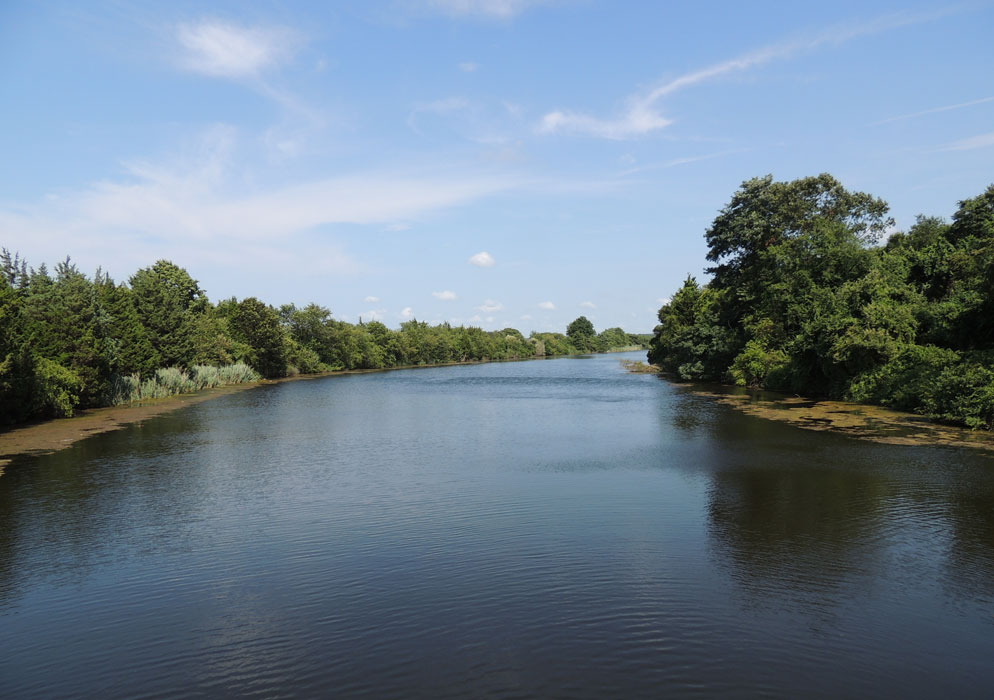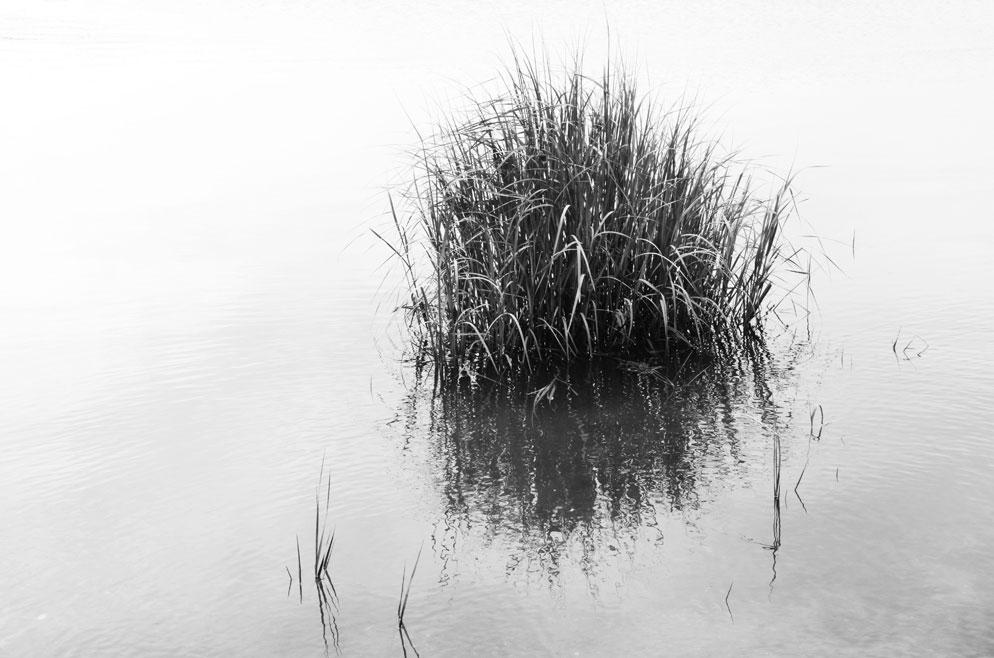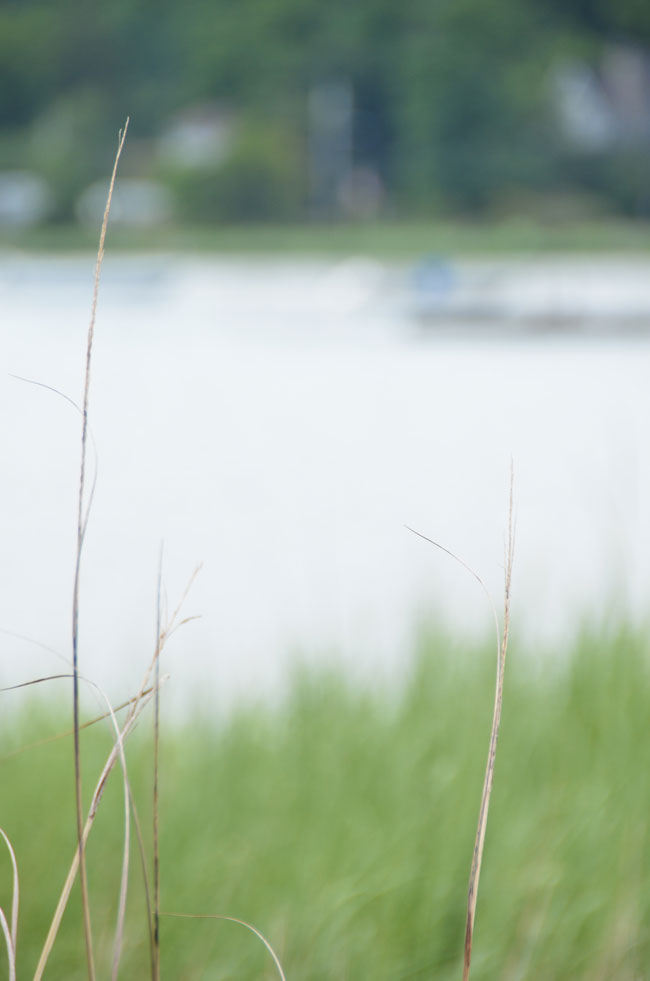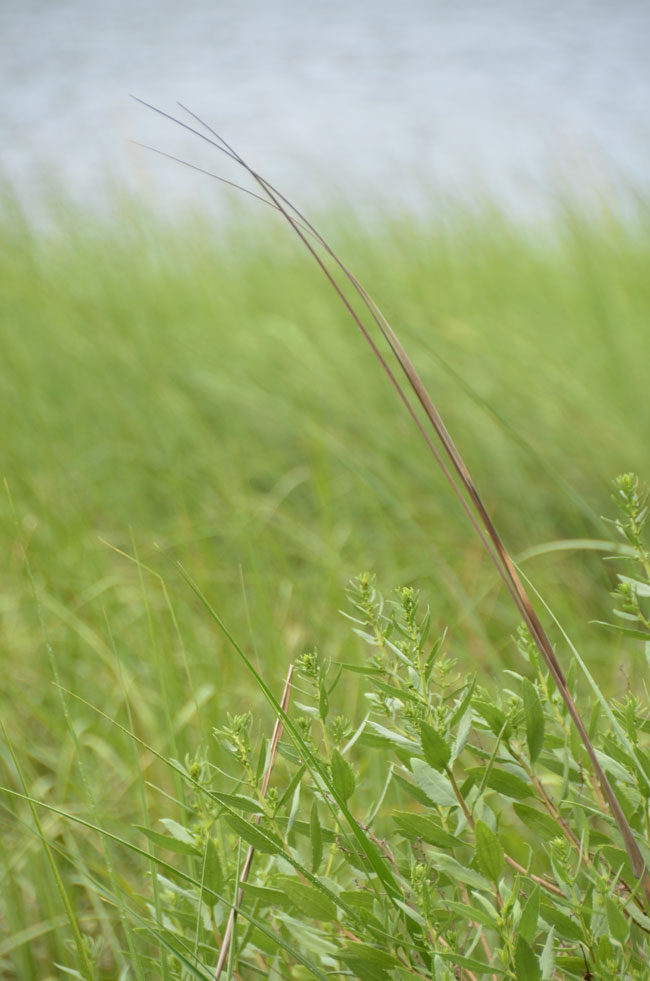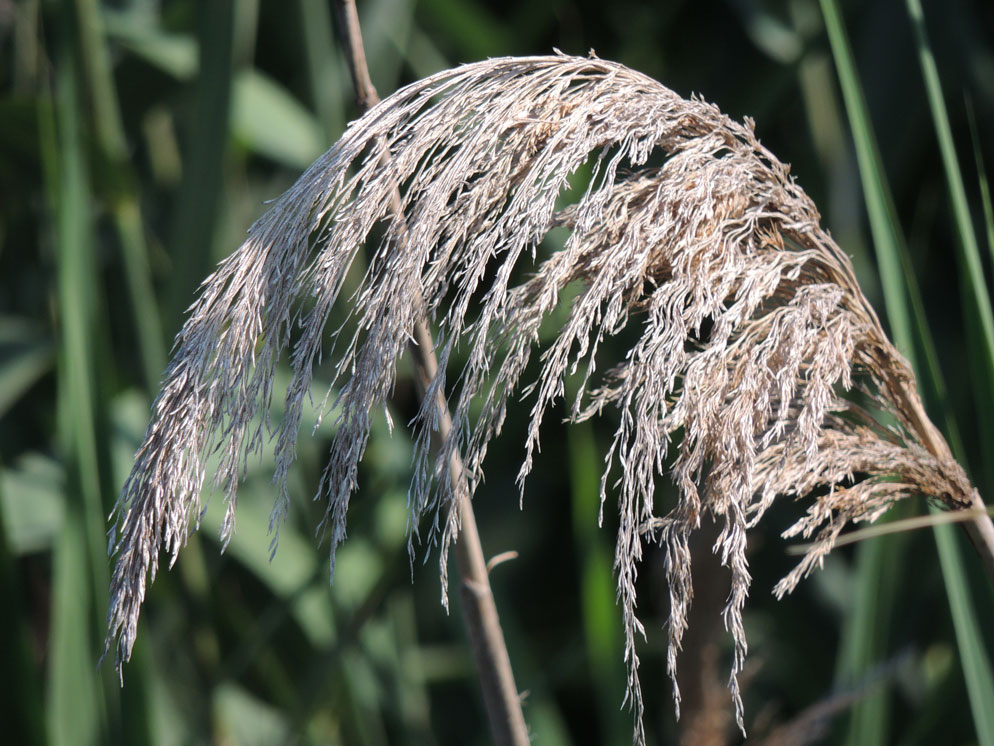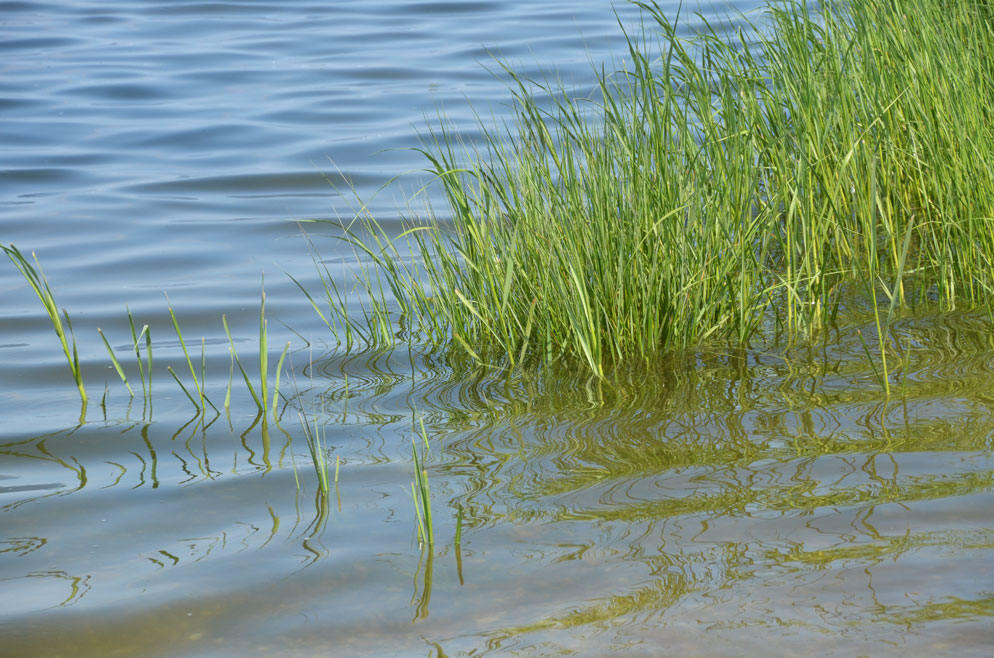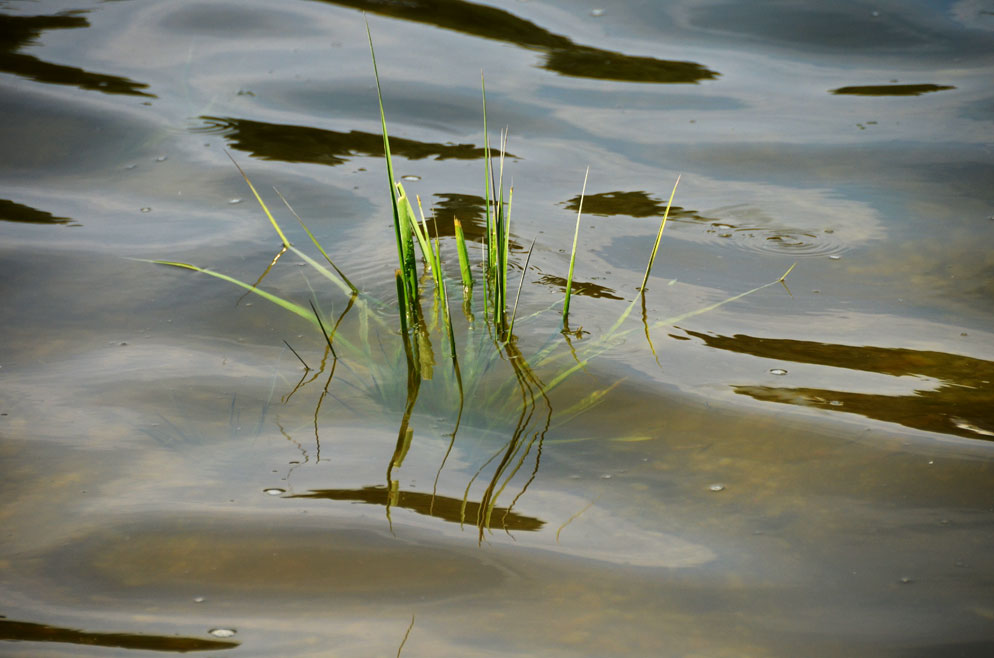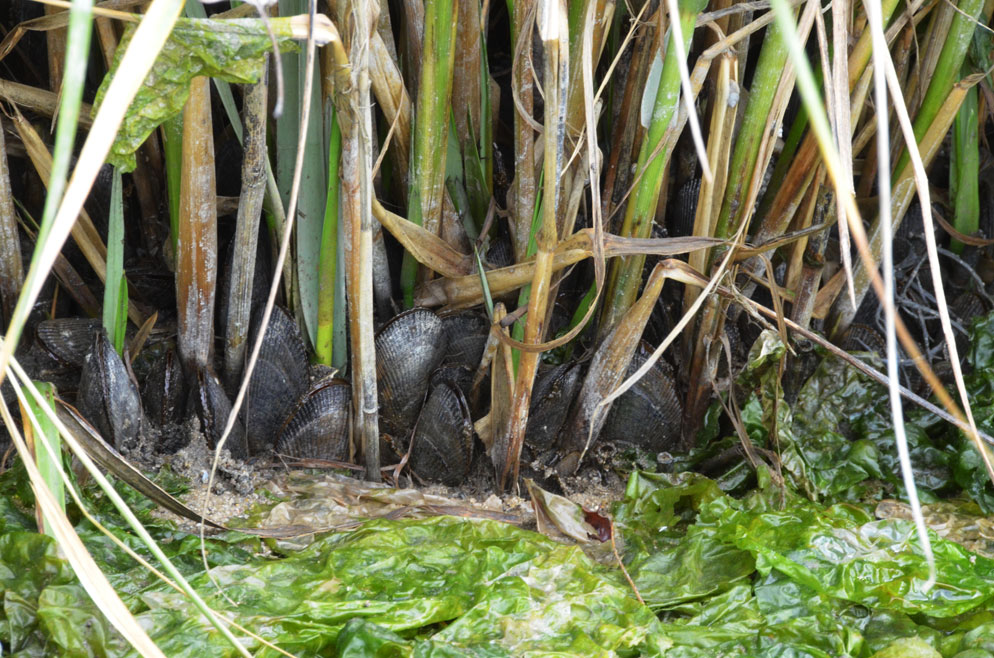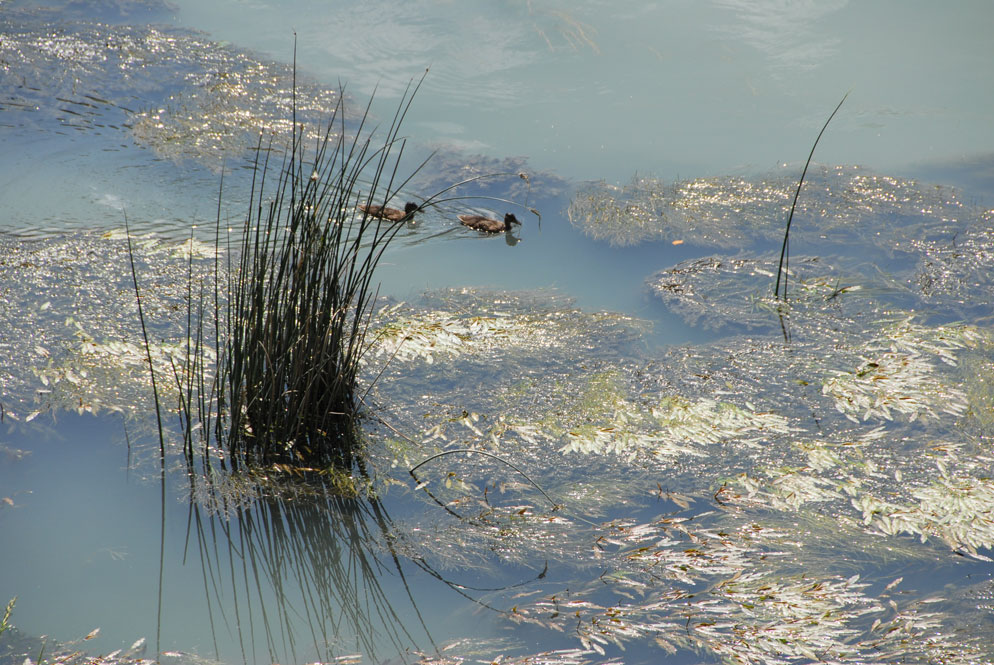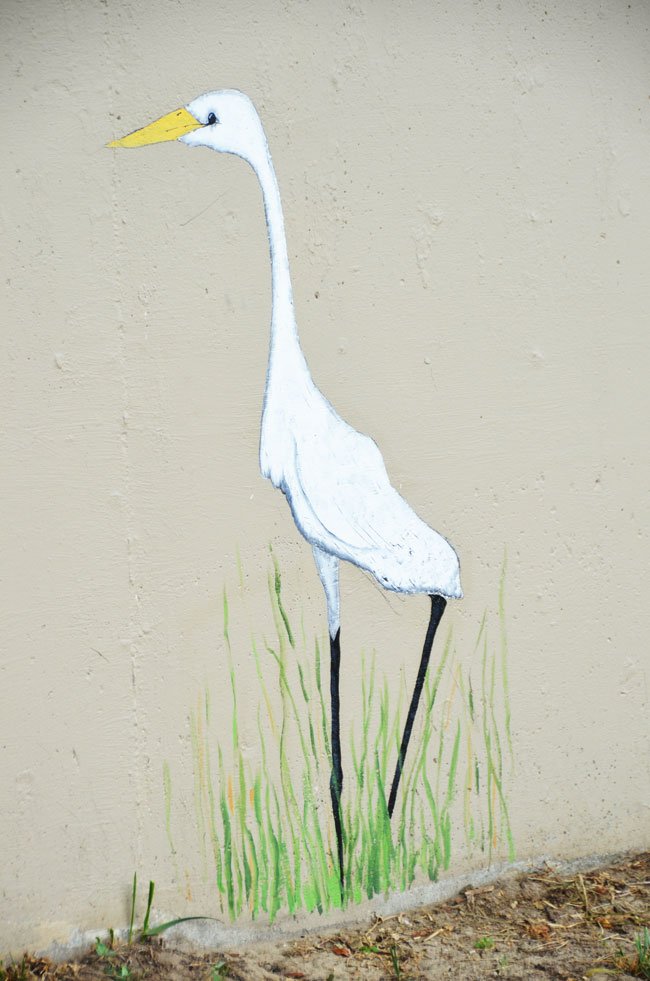Composing Photographs
Creatively photographing a salt marsh
One of the most common mistakes beginning photographers make is taking a picture of the first thing they see and not going any further. Spending a little time to walk around the subject and explore it from different angles and distances can often result in a better photo.
Most people "see" good pictures, but then don't know how to take what they see and turn that into an interesting photo. In this example, we've found some grasses at the edge of a marsh. Walking up, we see nice stalks of grass and realize they would make a good picture. So, we shoot it. Now we've got a picture, but we've included too much. Anyone looking at it will see a background with bright green grasses, the river, and buildings on the other side of the river that competes for their attention with the grass we really wanted to show.
In this example, the background is distracting the viewer's focus from the thin stalks of grass. D5100, AF-S DX NIKKOR 18-200mm f/3.5-5.6G ED VR II, 1/640 sec., f/5.6, ISO 400, Matrix metering, Aperture priority.
By changing the shooting angle, the distracting background is minimized. D5100, AF-S DX NIKKOR 18-200mm f/3.5-5.6G ED VR II, 1/400 sec., f/5.6, ISO 400, Matrix metering, Aperture Priority.
So the first thing we need to do is decide what it is that caught our eye? What is it that made us want to take a picture in the first place? If in fact it's the grass, then why include all the other stuff? Why not move closer and shoot just the grass? If we get closer and fill our viewfinder with the grasses, then we can get rid of the other distracting elements in the scene. This can be done by physically walking closer, or if that’s not possible, by zooming into the scene. Photographers using cameras with interchangeable lenses can use a longer lens, or teleconverter to get closer.
We can also change our shooting angle, or use a wide aperture to blur the background so its nothing more than soft color. Placing the subject against a background that is a different color or tone will also help to separate the subject and focus the viewer’s eyes where you want them. Is your subject in bright light and the background in shade? Shooting the grass under such a lighting situation will also separate the subject from the background.
See if there's a different way to shoot the grass, maybe from down low to silhouette them against the sky. Turn the camera and shoot vertical photos. Or even tilt the camera on an angle to add uniqueness to a subject.
Compose an image using negative space to focus on the subject of the picture. Use the reflections of the marsh grass and reeds in the water as part of your composition. Extreme close-up photographs often give an image a more abstract feel. Use a long zoom or macro mode to change your perspective.
Marsh Life
While it’s pretty easy to find gulls, ducks or herons flying or swimming around the marshes, look hard and you’re likely to find plenty of life that call the marshes home. Visit the salt marsh at low tide and look closely—and you’ll find various types of crabs that burrowing out of the sand to feed. All sorts of insects are likely buzzing around the grass, ready for their close up. Deep within the stalks of marsh grass, protected from predators, crustaceans are often visible when the tide recedes.
And just because you’re photographing the salt marsh, don’t pass up the opportunity to photograph man made objects such as small bridges or even works of art that you come across.
Be creative. Most all Nikon digital cameras offer special effects that will let your creativity shine. Shoot in Black & White—or convert an image to B&W on the computer for a completely different look.
Remember, when you’re using a digital camera, you're no longer paying for film. There's no reason not to shoot a lot of photos. Shoot, shoot, shoot, until you're absolutely, positively sure you've got the picture you want. It's always easier to delete the photos you don't need than to go back and try to re-shoot the same scene.

